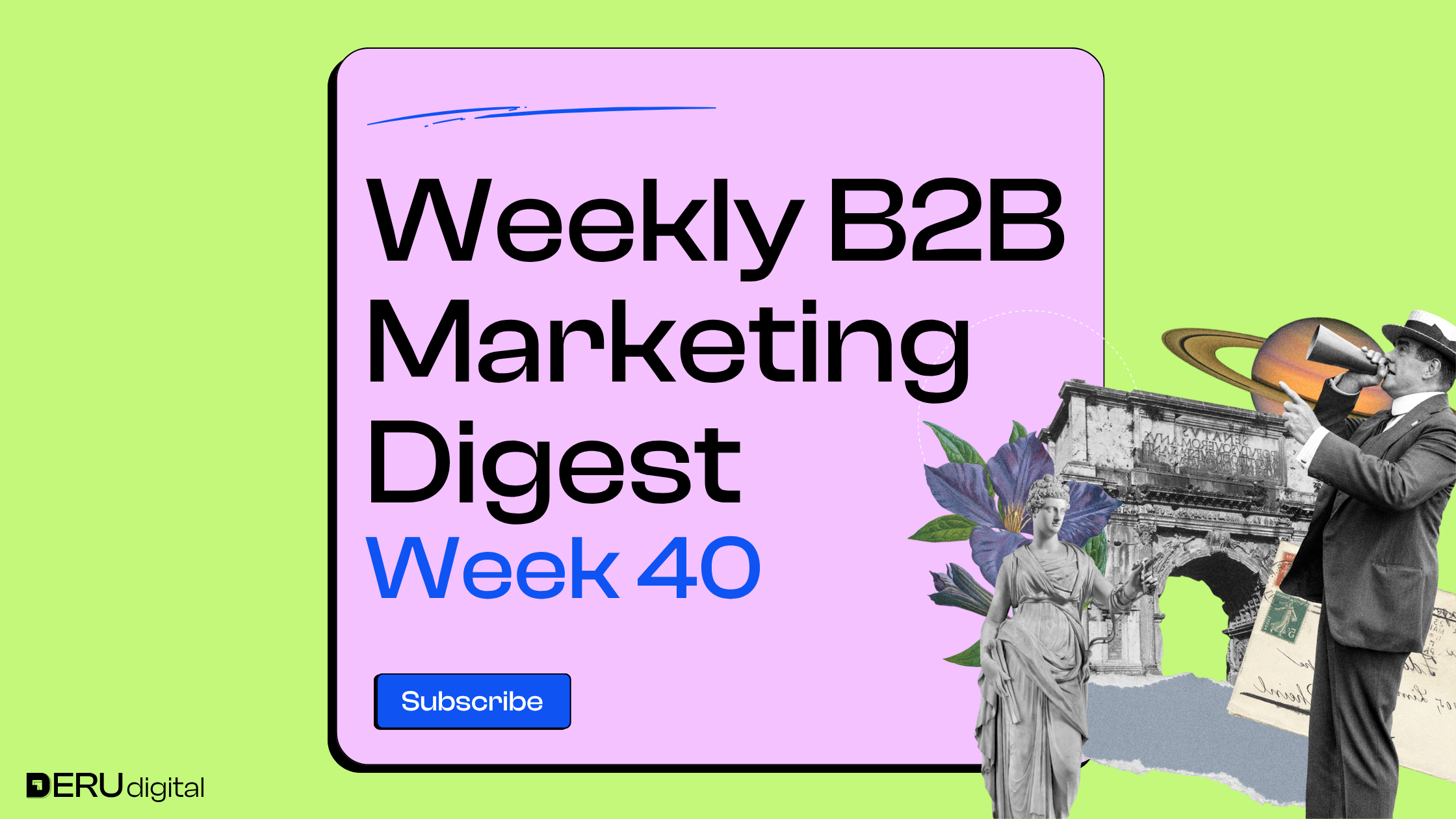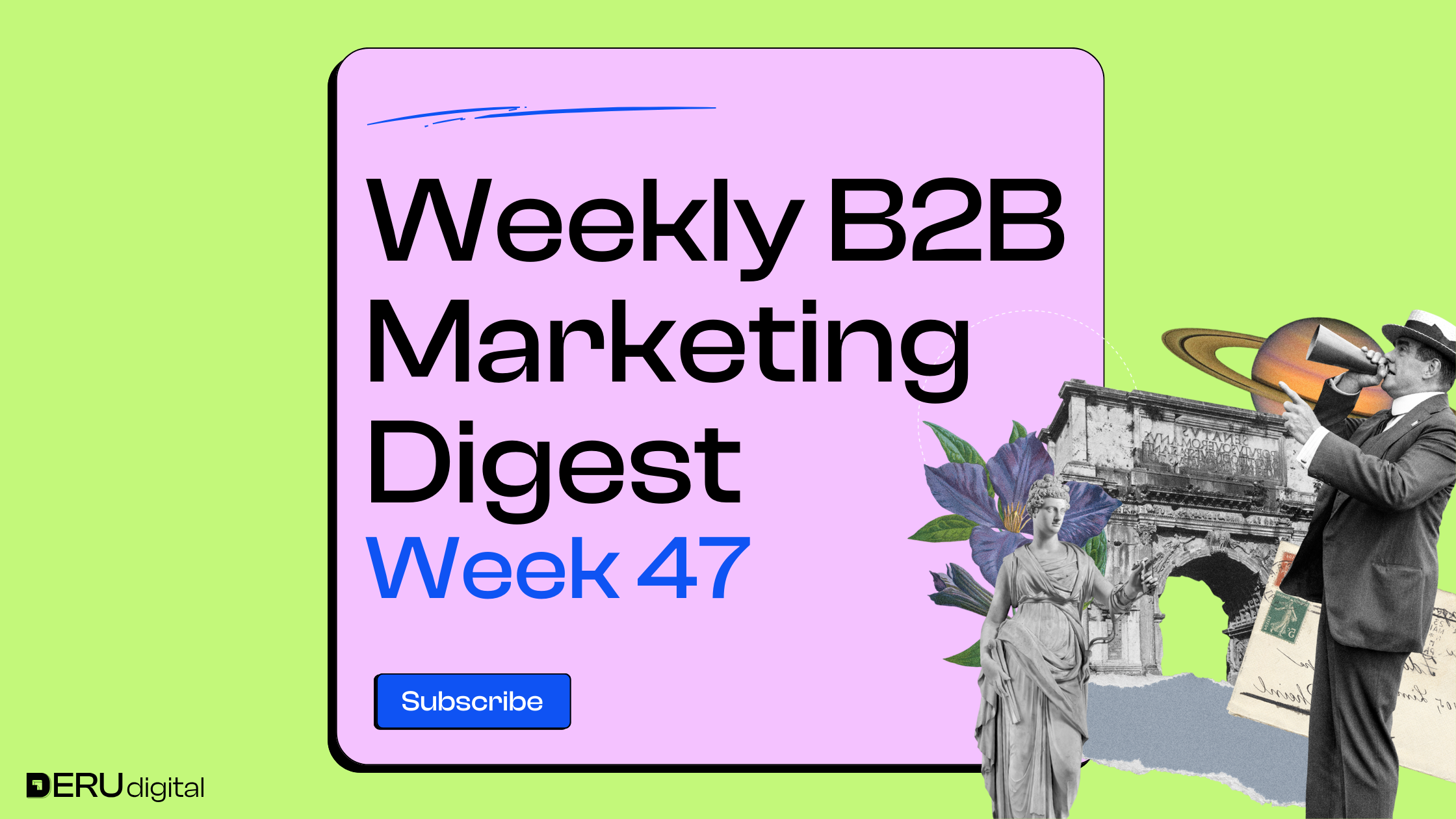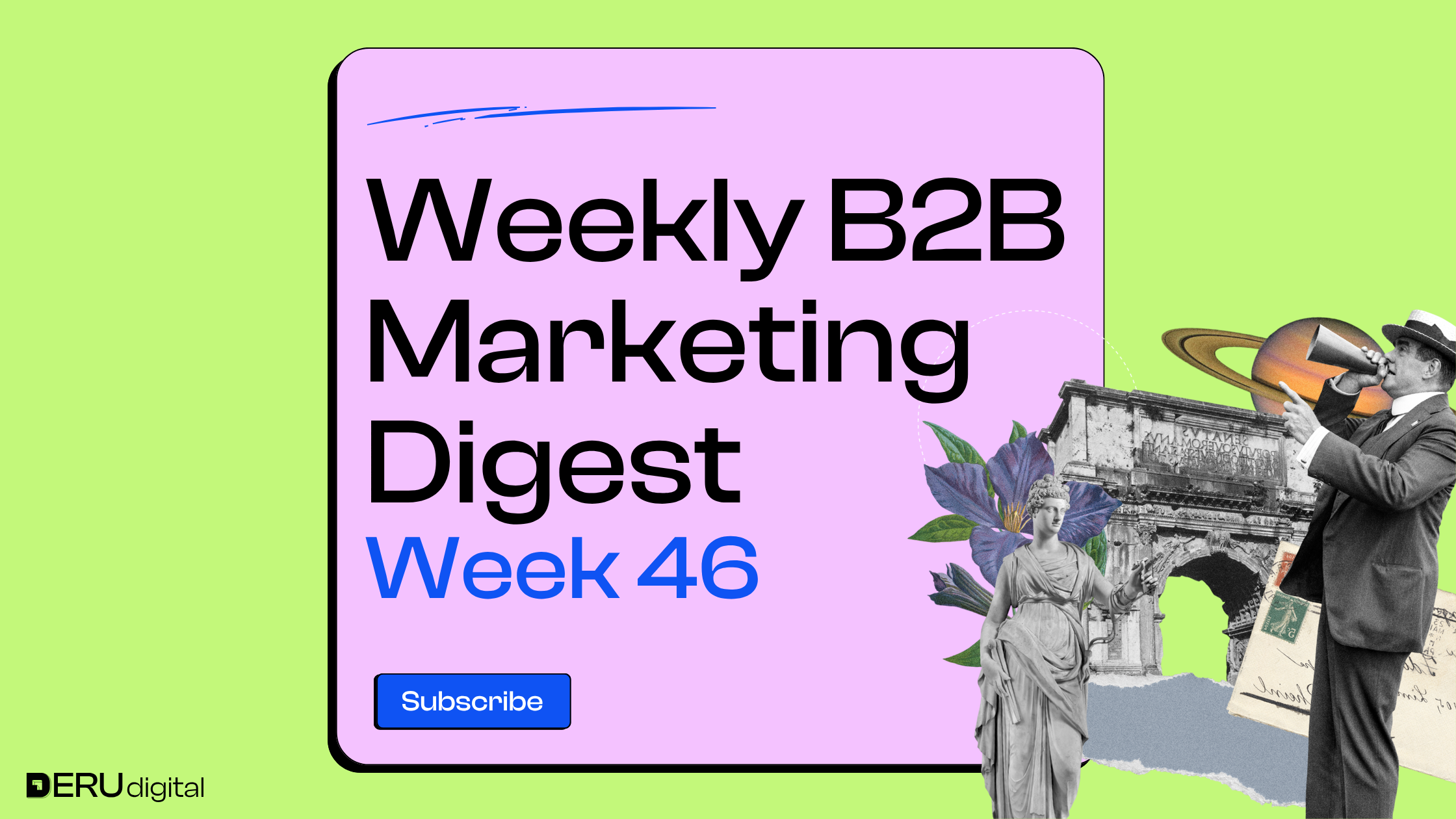INSIGHTS FROM EXPERTS ON LINKEDIN
Filipa Canelas shares that LinkedIn has added “Saves” and “Sends” to post analytics, a huge win for B2B marketers. These new metrics reveal hidden buyer activity: “Saves” show when someone’s researching your post, while “Sends” track when it’s being shared privately in DMs with decision-makers. It’s proof that your best prospects might not be engaging publicly, but they’re still paying attention behind the scenes.

Jonathan Bland points out that more likes or comments don’t always mean your content is performing better. Broader posts reach more people, but niche ones often drive stronger engagement within smaller, more relevant audiences. He suggests paying closer attention to engagement rates instead of chasing vanity metrics like impressions or likes.

Andreas Obel 
Liam Moroney explains that the customers who help you start a business aren’t usually the ones who help you scale. Early adopters buy for different reasons than mainstream buyers, and trying to apply the same playbook often backfires. He says real growth comes from timing, resources, and market understanding, not just momentum, and marketing should guide that transition.

Charlie de Thibault warns that programmatic campaign data is often inflated by invalid traffic, and it’s easier to detect than most think. A quick look at GA data by device, city, and hour can reveal bots showing up as “high-intent” visitors. He encourages marketers to run these checks regularly since fake clicks are still wasting ad spend across major channels.

Zara Kukkamaa shares key takeaways from a chat with a LinkedIn rep – 71% of today’s B2B buyers are Millennials or Gen Z, meaning short-form vertical video is now essential. She also highlights that using LinkedIn’s Conversion API is a must for proving ROI, and that Nordic audiences are highly active around AI and innovation content. Plus, new ad formats like First Impression Ads and Sales Navigator integrations are worth keeping an eye on.

WHAT'S NEW IN THE INDUSTRY
Most B2B brands are blending in instead of standing out, and it’s costing them. When everything looks the same, even your best ads can end up helping your competitors. The piece shows how brands can build real distinctiveness by using things like sound, icons, and characters to create a look and feel that people actually remember.

Google just made its open-source Meridian MMM a lot smarter. The update lets marketers factor in things like pricing, promotions, and long-term effects to see what really drives sales. With better ROI tracking and community support, Meridian is shaping up to be more of a strategy partner than just a measurement tool.
Google is rolling out a new Labs hub inside Google Ads that gives marketers one place to test experimental tools and features. It’s a cleaner, more transparent way to explore new capabilities like “missed growth opportunities” before they go live for everyone. Not all accounts have access yet, but it could make trying new ad features much easier.

Google just made it easier to see what’s really working in your Performance Max campaigns. The new asset and channel reporting updates let you break down performance by device, time, and network, plus track ROI and costs across Google’s channels like Search, YouTube, and Maps. It’s a big step toward more transparency and control over where your ad dollars are going.

Meta rolled out a new wave of AI tools, including “Business AI,” a built-in assistant that guides customers through the buying journey across ads, messages, and websites. It also introduced AI-generated video, music, and dubbing tools to help brands create more engaging content, along with expanded creator APIs for easier partnerships. The goal is to make campaign creation faster, more personalized, and more cost-effective.
Google Analytics just added 20 new unnormalized metrics, like New Users and Total Revenue, to its Benchmarking feature, letting businesses compare actual numbers instead of just ratios. The update gives marketers a clearer view of how their performance stacks up against similar companies. It’s a more practical way to spot growth opportunities and identify where you’re outperforming or falling behind.

That’s the scoop for this week! If you found this valuable and any useful insights caught your eye, feel free to share them with your network.
Until next week!





